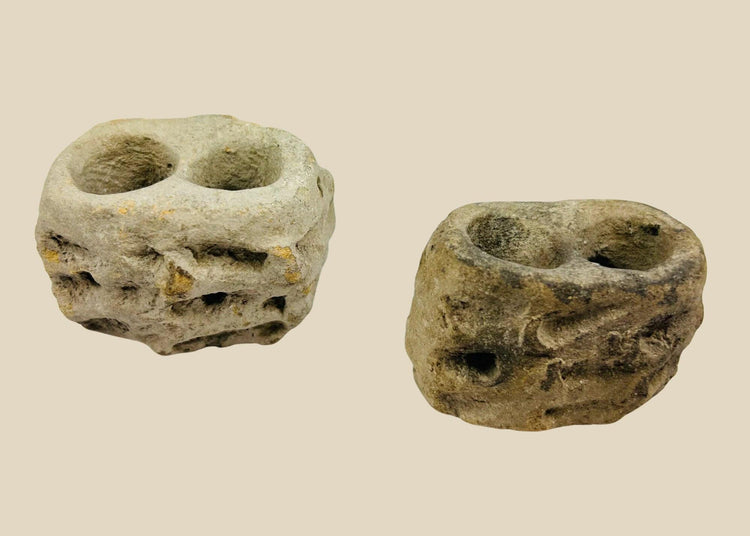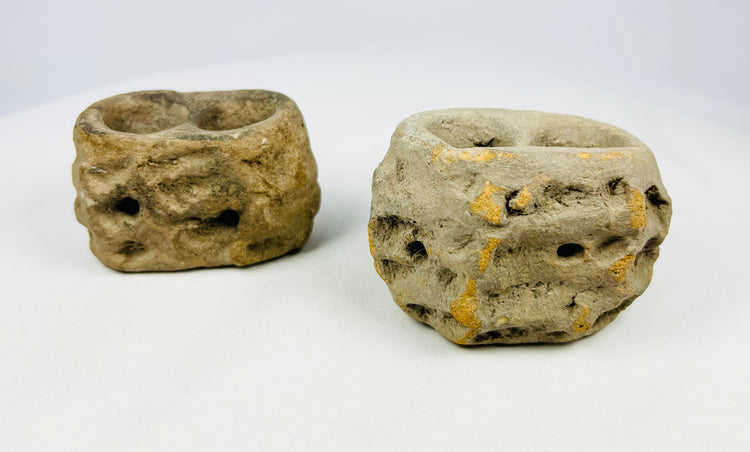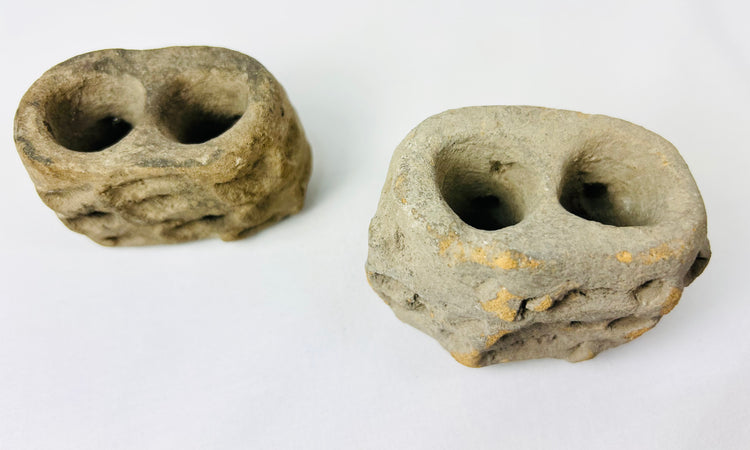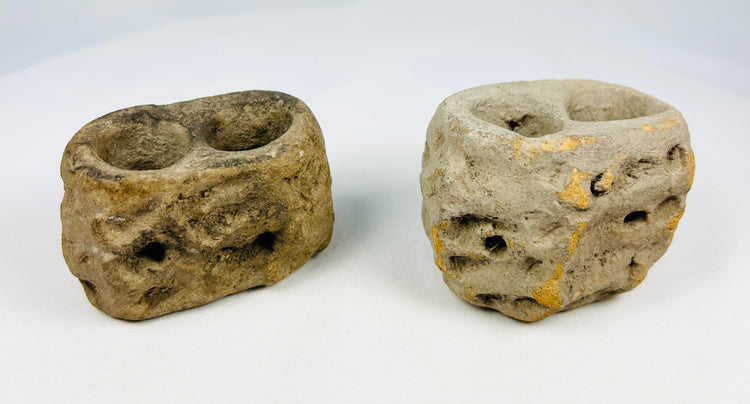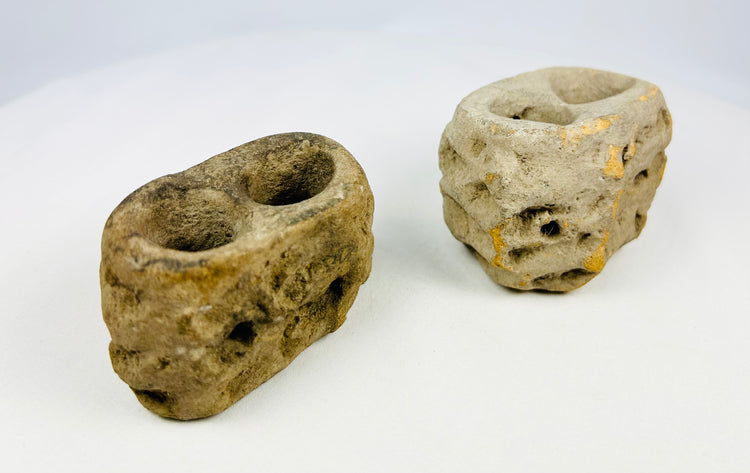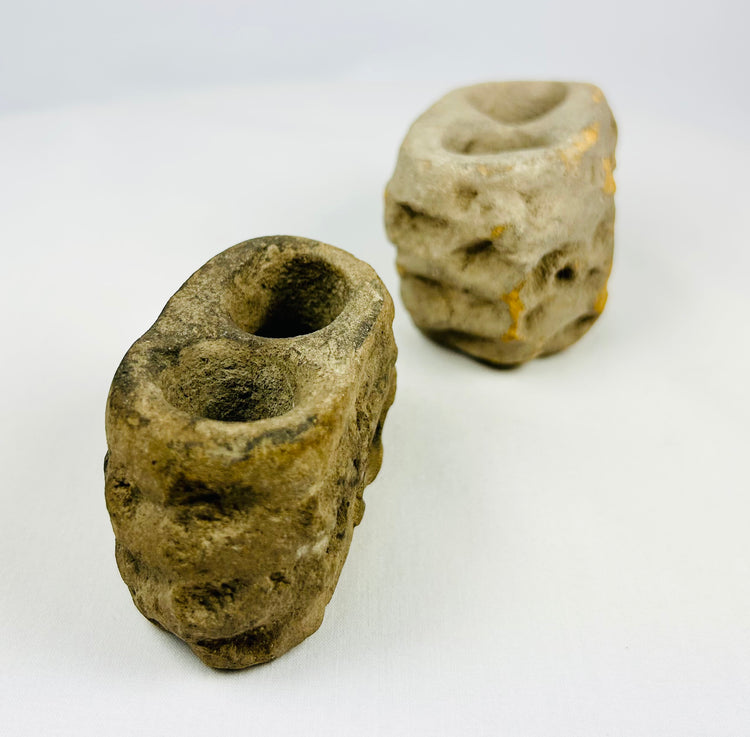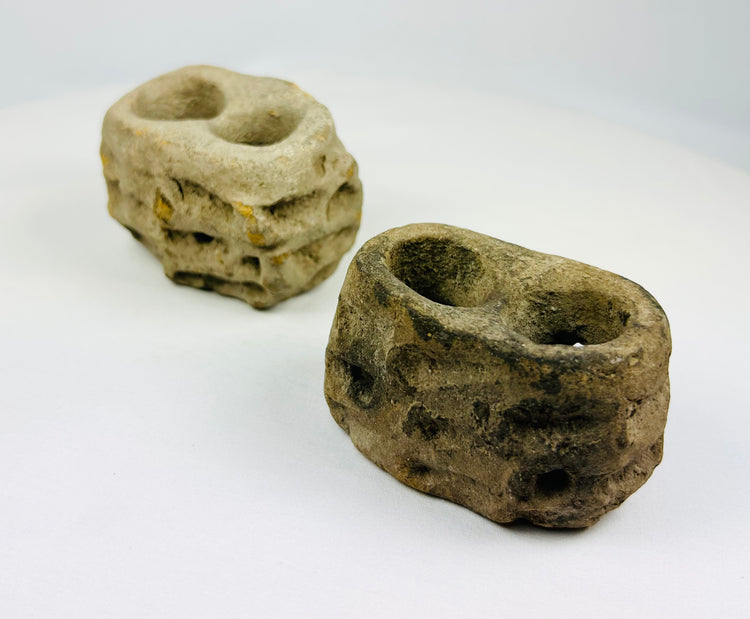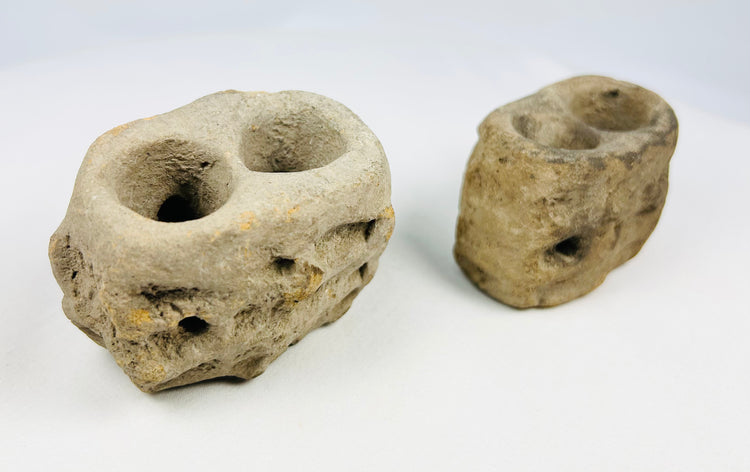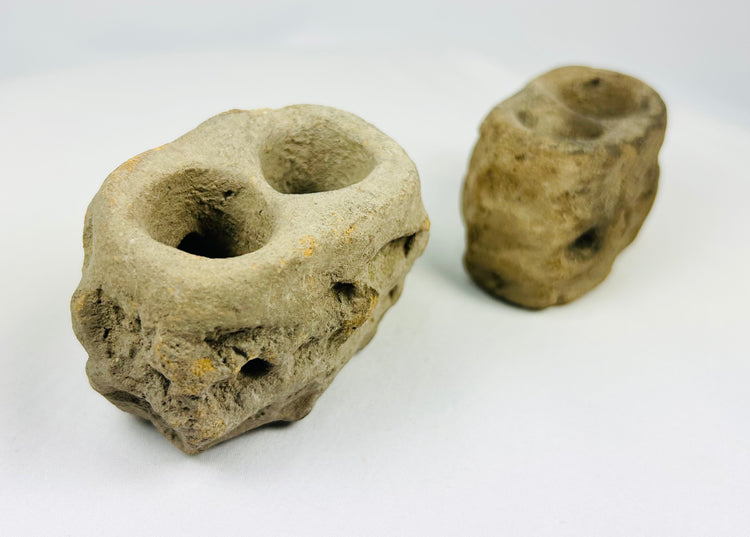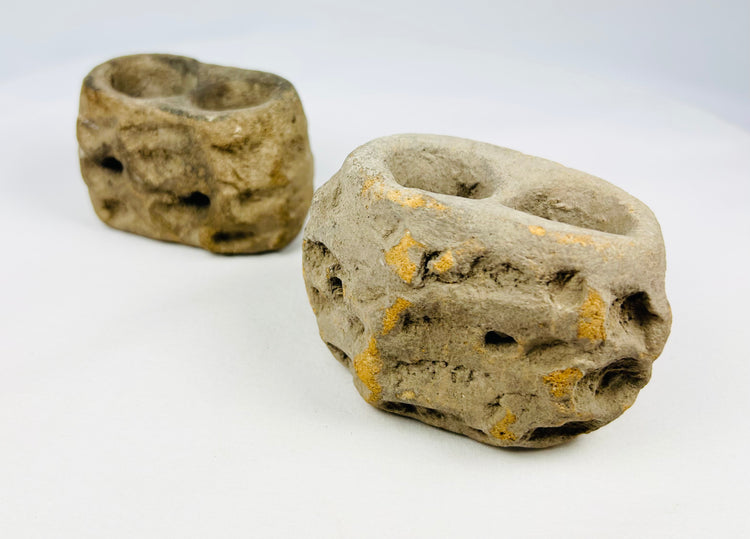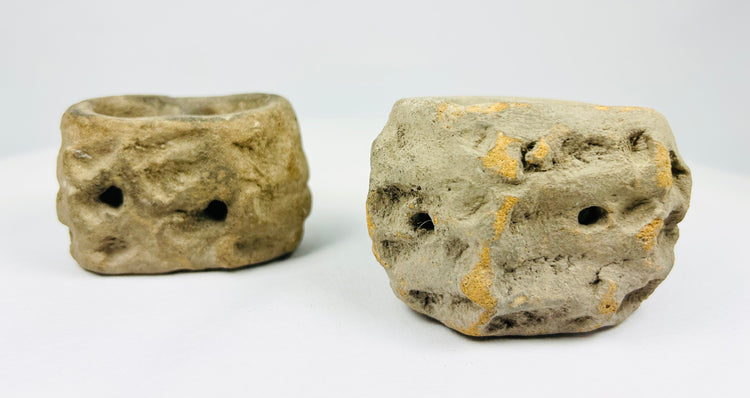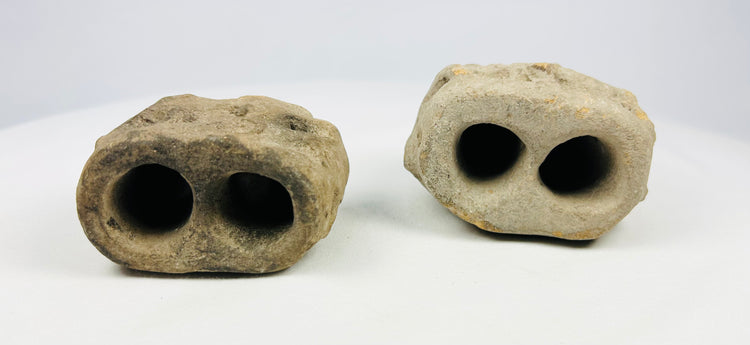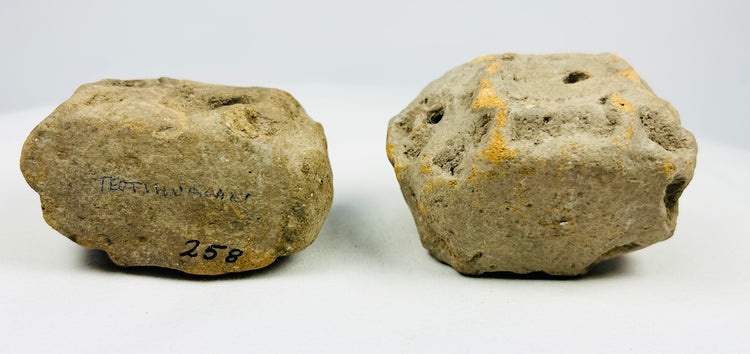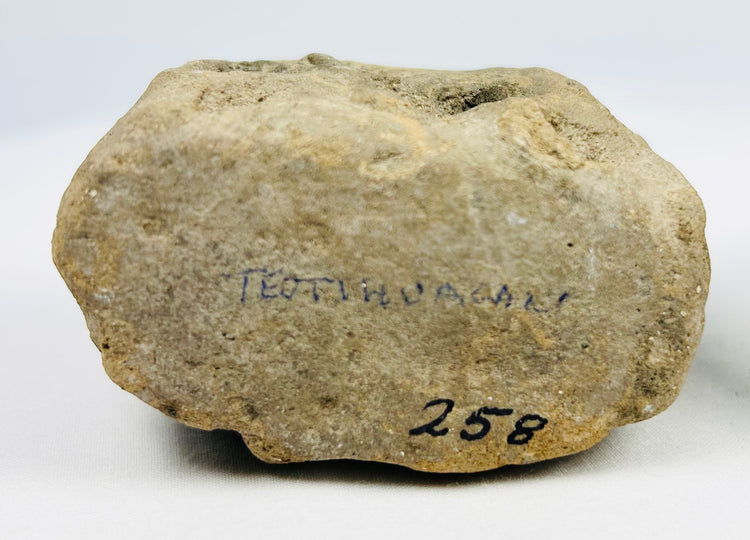Authentic Teotihuacan Braziers | Pre-Columbian Central Mexico | 200–600 CE
Description
More
Less
Historical Context & Origin
Region: Central Mexico, Teotihuacan
Material: Hand-modeled sand-based clay
Period: Pre-Columbian, ca. 200–600 CE
Description
This finely preserved Pre-Columbian ceramic vessel originates from the ancient city of Teotihuacan, a major Mesoamerican religious and cultural center near modern-day Mexico City. The piece is circular with two rough, hand-pressed holes, a distinctive characteristic of Teotihuacan ritual ceramics. Its exact function remains a topic of scholarly speculation, though it is commonly identified as a candelero or personal brazier, likely used for burning copal incense, offerings, or as a small light source.
The vessel’s robust form, combined with the side holes, suggests practical considerations for airflow or incense placement, reflecting the ingenuity of Teotihuacan artisans. The light sand-based clay, carefully hand-modeled, has aged gracefully, preserving the integrity of this rare artifact for over 1,500 years.
Features
- Pre-Columbian Teotihuacan ceramic ritual vessel
- Circular form with two hand-pressed openings
- Likely used as a brazier for burning incense or offerings
- Archaeological catalog number "258" inscribed on the base for provenance
- Made from light sand-based clay, hand-modeled by skilled artisans
- Excellent preservation with minimal wear
Cultural Significance
Teotihuacan, meaning "the place where gods were created," was a major cultural and religious hub from approximately 100–750 CE. Its monumental architecture, ceremonial complexes, and artisan production reflect a highly organized and spiritual society. Ceramics like this vessel played a vital role in domestic and ritual practices, likely associated with offerings, prayer, and household or temple ceremonies. The unique design of this candelero exemplifies the integration of functionality and ritual purpose in Teotihuacan daily and sacred life.
Condition
Excellent state of preservation for its age. Minor natural wear consistent with burial and handling. No restoration noted.
Dimensions
Height: 2 in
Width: 3 in
Depth: 2 in
Age
Circa 200–600 CE
Learn More
See a gallery of braziers at The Metropolitan Museum of Art's collection online.
Explore more artifacts from our Teotihuacan collection: Classic Teotihuacan Terracotta Attendant | Hands-on-Knees | Circa 250–600 CE
Description
Historical Context & Origin
Region: Central Mexico, Teotihuacan
Material: Hand-modeled sand-based clay
Period: Pre-Columbian, ca. 200–600 CE
Description
This finely preserved Pre-Columbian ceramic vessel originates from the ancient city of Teotihuacan, a major Mesoamerican religious and cultural center near modern-day Mexico City. The piece is circular with two rough, hand-pressed holes, a distinctive characteristic of Teotihuacan ritual ceramics. Its exact function remains a topic of scholarly speculation, though it is commonly identified as a candelero or personal brazier, likely used for burning copal incense, offerings, or as a small light source.
The vessel’s robust form, combined with the side holes, suggests practical considerations for airflow or incense placement, reflecting the ingenuity of Teotihuacan artisans. The light sand-based clay, carefully hand-modeled, has aged gracefully, preserving the integrity of this rare artifact for over 1,500 years.
Features
- Pre-Columbian Teotihuacan ceramic ritual vessel
- Circular form with two hand-pressed openings
- Likely used as a brazier for burning incense or offerings
- Archaeological catalog number "258" inscribed on the base for provenance
- Made from light sand-based clay, hand-modeled by skilled artisans
- Excellent preservation with minimal wear
Cultural Significance
Teotihuacan, meaning "the place where gods were created," was a major cultural and religious hub from approximately 100–750 CE. Its monumental architecture, ceremonial complexes, and artisan production reflect a highly organized and spiritual society. Ceramics like this vessel played a vital role in domestic and ritual practices, likely associated with offerings, prayer, and household or temple ceremonies. The unique design of this candelero exemplifies the integration of functionality and ritual purpose in Teotihuacan daily and sacred life.
Condition
Excellent state of preservation for its age. Minor natural wear consistent with burial and handling. No restoration noted.
Dimensions
Height: 2 in
Width: 3 in
Depth: 2 in
Age
Circa 200–600 CE
Learn More
See a gallery of braziers at The Metropolitan Museum of Art's collection online.
Explore more artifacts from our Teotihuacan collection: Classic Teotihuacan Terracotta Attendant | Hands-on-Knees | Circa 250–600 CE
You May Also Like


































